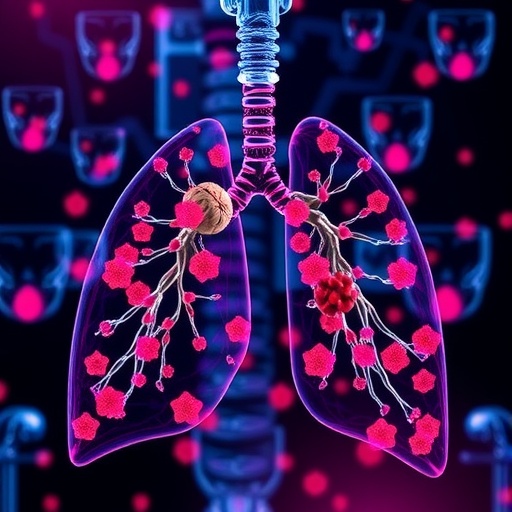Obstructive Sleep Apnea (OSA) has long been recognized as a significant global health challenge characterized by recurrent upper airway obstruction during sleep. These episodic interruptions not only diminish sleep quality but also precipitate a cascade of systemic pathologies ranging from cardiovascular disease to neurodegeneration and cancer. Recent groundbreaking insights have unveiled a pivotal role for exosomes—nanoscale extracellular vesicles—in mediating the complex intercellular communication that underpins these comorbidities. This revelation opens new frontiers in understanding OSA’s multifaceted impacts and suggests novel avenues for diagnostics and therapeutics.
Exosomes, ranging between 30 to 150 nanometers in diameter, emerge from the endosomal compartment of most cell types and serve as intricate couriers of biological cargo. By encapsulating microRNAs (miRNAs), proteins, lipids, and other bioactive molecules, these vesicles enable cells to exchange information and modulate distant cellular behaviors under both physiological and pathological conditions. In the context of OSA, the intermittent hypoxia (IH) and sleep fragmentation (SF) characteristic of the disorder profoundly alter both the secretion profile and molecular payload of exosomes derived from diverse donor cells, including macrophages and tumor cells.
Critically, OSA-affected exosomes display deleterious influence across multiple cellular systems. For example, plasma-derived exosomes from OSA patients have been shown to accelerate endothelial senescence and dysfunction. This effect is foundational in promoting atherosclerotic changes that contribute to heightened cardiovascular risks. Furthermore, exosomal microRNA signatures such as miR-20a-5p have been implicated in hippocampal neuronal injury, implicating these vesicles in the cognitive deficits widely observed in OSA populations. Such neuronal damage is driven by intricate regulatory networks of gene expression modulated by exosomal miRNAs.
Metabolic ramifications of OSA are similarly mediated through exosome traffic. Adipose tissue-derived exosomes, enriched in miR-155, have emerged as key instigators of insulin resistance—an effect that exacerbates metabolic syndrome in OSA patients. In parallel, exosomal miR-421 has been identified to promote non-alcoholic fatty liver disease (NAFLD), by inhibiting crucial hepatocellular pathways responsible for lipid metabolism and cellular homeostasis. This highlights a systemic dimension where altered exosome signaling bridges OSA to metabolic disease progression.
The oncological implications of OSA-altered exosomes are equally profound. Tumor microenvironments exposed to IH-modified exosomes demonstrate accelerated proliferation in lung cancer and melanoma models. This is thought to occur through the modulation of signaling cascades within cancer cells that favor growth and suppress apoptotic mechanisms. Encouragingly, the standard OSA treatment of continuous positive airway pressure (CPAP) has shown partial efficacy in reversing these exosome-induced oncogenic phenotypes, underscoring the therapeutic potential of targeting exosomal pathways.
Interestingly, exosomes are not solely pathological mediators; their therapeutic potential is garnering significant attention. Mesenchymal stem cell (MSC)-derived exosomes, loaded with miR-122, have exhibited promising results in sensitizing liver cancer cells to chemotherapy, offering a targeted strategy to enhance current cancer treatments. Additionally, microglial exosomes transporting miR-146a-5p appear to mitigate neuroinflammation linked to OSA, revealing a natural neuroprotective role that could be harnessed therapeutically.
The review led by researchers at Central South University synthesizes these multifaceted findings into a cohesive framework positioning exosomes as critical intermediaries linking OSA with its diverse comorbidities. Through their ability to encapsulate and transfer distinct molecular effectors, exosomes orchestrate cellular cross-talk that drives pathological remodeling in cardiovascular, neurological, metabolic, and oncologic systems. This insight not only deepens our understanding of OSA pathophysiology but also prompts exploration of exosome-based biomarkers that could revolutionize disease detection and monitoring.
The convergence of exosome biology with sleep medicine introduces an exciting paradigm in personalized healthcare. Identifying exosomal miRNA profiles specific to OSA and its complications could pave the way for noninvasive liquid biopsies that provide real-time disease status. Moreover, engineering exosomes to deliver therapeutic cargo directly to affected tissues represents an emergent frontier promising targeted interventions with minimal off-target consequences.
Ruoyun Ouyang, the study’s corresponding author, emphasizes this translational potential: “Exosomes are the critical communicators that bridge obstructive sleep apnea and its myriad comorbidities. Harnessing their properties can transform how we diagnose and treat these interconnected disorders.” Ongoing research will be instrumental in clarifying the mechanistic underpinnings of exosome biogenesis and cargo selection in the setting of intermittent hypoxia and sleep disruption.
As the field advances, integrating high-throughput omics technologies with sophisticated in vivo models will be pivotal. This approach is expected to unravel the precise molecular constituents of OSA-altered exosomes and their receptor-mediated uptake mechanisms in target cells. Success here could accelerate the development of novel therapeutics that neutralize pathogenic exosome signaling or amplify protective exosome functions.
Overall, the recognition of exosomes as central players in the pathogenesis of OSA-related diseases marks a significant milestone. These tiny vesicles embody a nexus of biological communication that explains the systemic reach of OSA beyond mere airway obstruction. Understanding and leveraging exosomal pathways offers the promise of highly specific, mechanism-based treatment modalities that could dramatically improve morbidity and mortality associated with this pervasive disorder.
Subject of Research: Cells
Article Title: Exosomes in obstructive sleep apnea-related diseases
News Publication Date: 4-Sep-2025
Web References: http://dx.doi.org/10.1097/CM9.0000000000003784
References: DOI: 10.1097/CM9.0000000000003784
Image Credits: Ruoyun Ouyang from Central South University
Keywords: Public health, Human health, Health and medicine, Diseases and disorders, Cancer, Neurodegenerative diseases, Diabetes, Cardiovascular disorders
Tags: diagnostics and therapeutics for OSAexosomes and cardiovascular diseaseexosomes and tumor biologyexosomes in obstructive sleep apneaextracellular vesicles in neurodegenerationimpact of intermittent hypoxia on exosomesintercellular communication in OSAmechanisms of sleep fragmentationmicroRNAs in exosomal cargoobstructive sleep apnea comorbiditiesrole of exosomes in sleep disorderssystemic effects of obstructive sleep apnea





